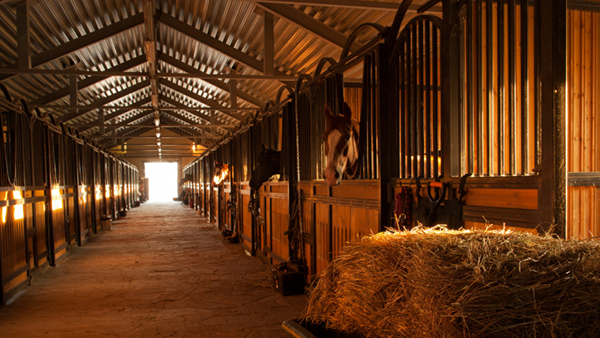Six Tips For Ammonia Control in Horse Stalls
By: Emily Dickson, Alltech
Have you ever felt like your barn smelled worse than it reasonably should? We are not talking about normal animal smells — I mean, who doesn’t love the smell of sawdust and fresh hay?
No, we are talking about the notorious stench of dirty stalls, specifically from excess horse urine and ammonia. In some cases, this strong odor can stick around even after you have thoroughly cleaned your horse’s stall. I think it is safe to say that every horse owner has experienced what I am referring to at some point in their life.
But did you know that ammonia is more than just an unpleasant smell? Exposure to ammonia, depending on the level of severity, can have serious health consequences for both you and your horse, making horse stall management a critical part of any overall barn management plan.
What is ammonia?
Protein is an essential component of any equine diet, but when protein is overfed, the horse’s body expels it through feces or urine in the form of urea. The natural bacteria in the environment feed on this urea, which results in the production of ammonia gas.
Although ammonia is not visible to the human eye, it can be readily detected by more than just the human nose. Ammonia is a noxious gas that can cause burning sensations in the eyes, lungs and throat. It has also been known to make people feel nauseous and dizzy and can induce vomiting and increase mucus production and fluid levels in the lungs.
Overall, ammonia is classified as a highly hazardous gas and is something that should be taken seriously for both human and equine health.
How does ammonia affect my horse?
If your eyes start to water after spending just 10 minutes cleaning a horse stall, you can bet that the ammonia gas is also affecting the stall resident. Ammonia is a caustic gas and can cause damage by burning the eyes and respiratory tissues. It may also be a contributing factor to inflammatory airway disease and, eventually, chronic obstructive pulmonary disease (COPD).
Although the complete effects of ammonia are not yet known, it has even been linked to a negative effect on metabolic and reproductive hormones.
Overall, high levels of ammonia negatively affect horses’ performance through its impact on the respiratory and immune systems.
What can I do to control ammonia levels?
Luckily, you and your horse do not have to be victims to ammonia. The steps outlined below will help control odor in your barn and support better horse and human health:
- Muck out horse stalls on a regular basis. Remove any wet or soiled shavings, manure and urine piles at least once every day. If possible, muck stalls twice per day.
- Ensure proper ventilation. It is a good barn management practice to give each stall time to dry and “air out” without the horse present. Open any doors and windows, and do your best to enhance cross-ventilation with ceiling and aisle fans.
- Design horse stalls for optimal drainage. You may not have built your own barn, but even so, do your best to avoid letting urine pool or seep. Stall mats with gaps are perfect examples of places that urine — and, by default, ammonia — can hide. Invest in seamless stall mats and choose concrete floors, if possible, as wood and dirt stall floors are more likely to absorb urine. It is also wise to use more absorbent bedding to line the stall. Your bedding options will vary by region and location, but in general, straw is the least absorbent and should be avoided unless it is being used for a specific purpose, such as in a foaling stall.
- Dial-in nutrition. As mentioned above, ammonia is a byproduct of protein. You want to feed your horse the correct amount of protein, but do not assume that more is better, as unused protein will result in increased ammonia production. An equine nutritionist or veterinarian will be able to help you determine your horse’s specific nutrient requirements.
- Increase turnout time. Horses need turnout for various reasons — and fresh air is a big one! Housing horses outside with adequate shelter permanently, or even for just part of the day, is a great management practice to increase overall health.
- Look into unique solutions. One of the most effective and cutting-edge solutions to your horse barn’s ammonia problems comes straight from the desert! What does the desert have to do with my horse’s health?
De-Odorase® is a completely sustainable product produced in Serdan, Mexico, from the native Yucca schidigera plant. This unique product contains compounds that have been proven to control odor from ammonia across several species.
De-Odorase® can work on your farm in multiple ways:
- When fed to the animal, it promotes protein digestion and metabolism, leading to less excreted urea in the waste.
- When sprayed as a liquid in stalls before re-bedding, onto bedding already on stall floors or even into the air, De-Odorase® binds ammonia, preventing noxious odors and related health problems.
- You may not have guessed that the Mexican desert could play such a large role in your horse’s health, but De-Odorase® — especially when combined with the management tips outlined above — can have a big impact.
Provided by Alltech.com











